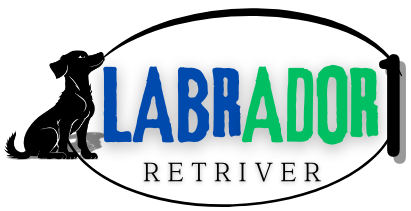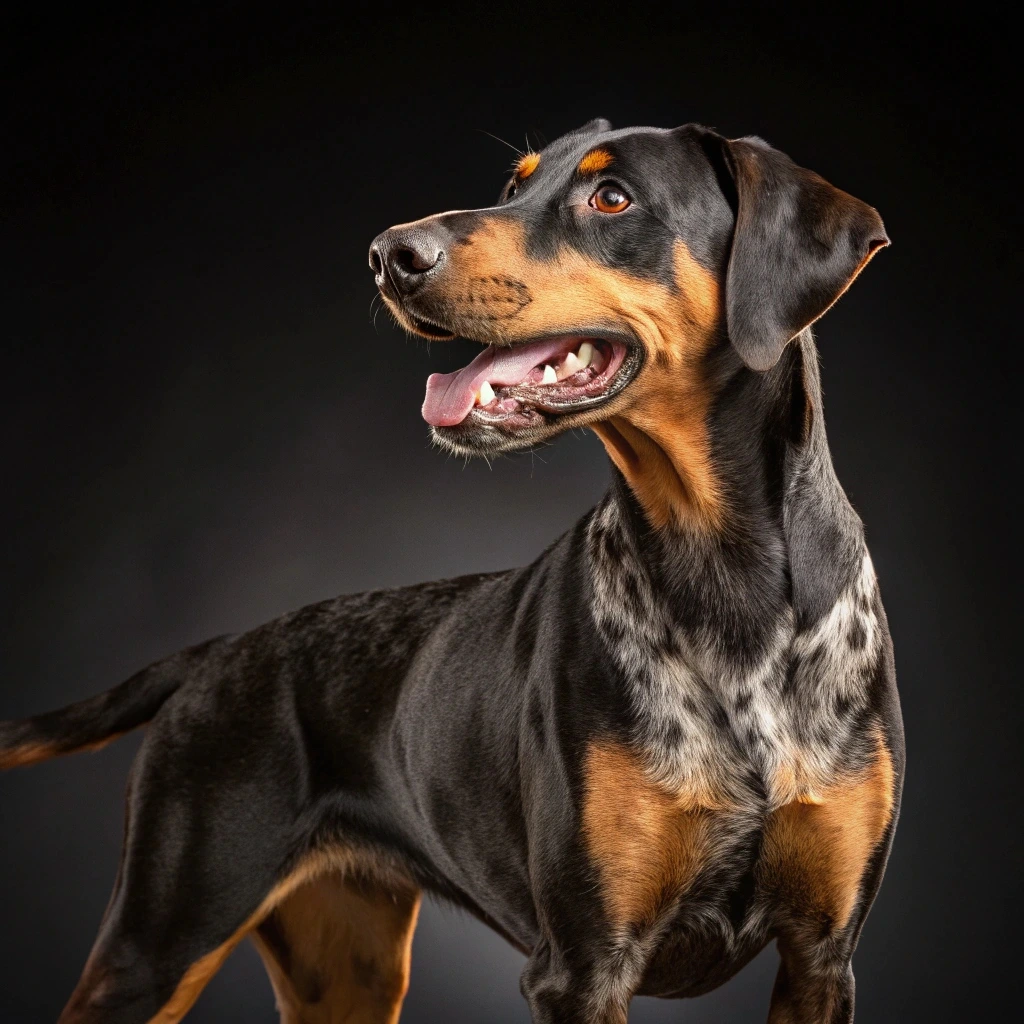What is a Doberman Lab Mixes?
You want a dog that is a perfect fit for your personality and way of life when you consider getting one. Perhaps you envision a devoted guardian who is also entertaining enough to accompany your family on adventures. The Doberman Lab Mixes might be just what you’re looking for if this describes you. This unusual cross blends the affectionate and gregarious disposition of a Labrador Retriever with the power and alertness of a Doberman. But is a Doberman Lab Mixes the right dog for you? What is it exactly? Let’s go over everything you require.
Table of Contents
Understanding the Doberman Lab Mixes: Breed Overview
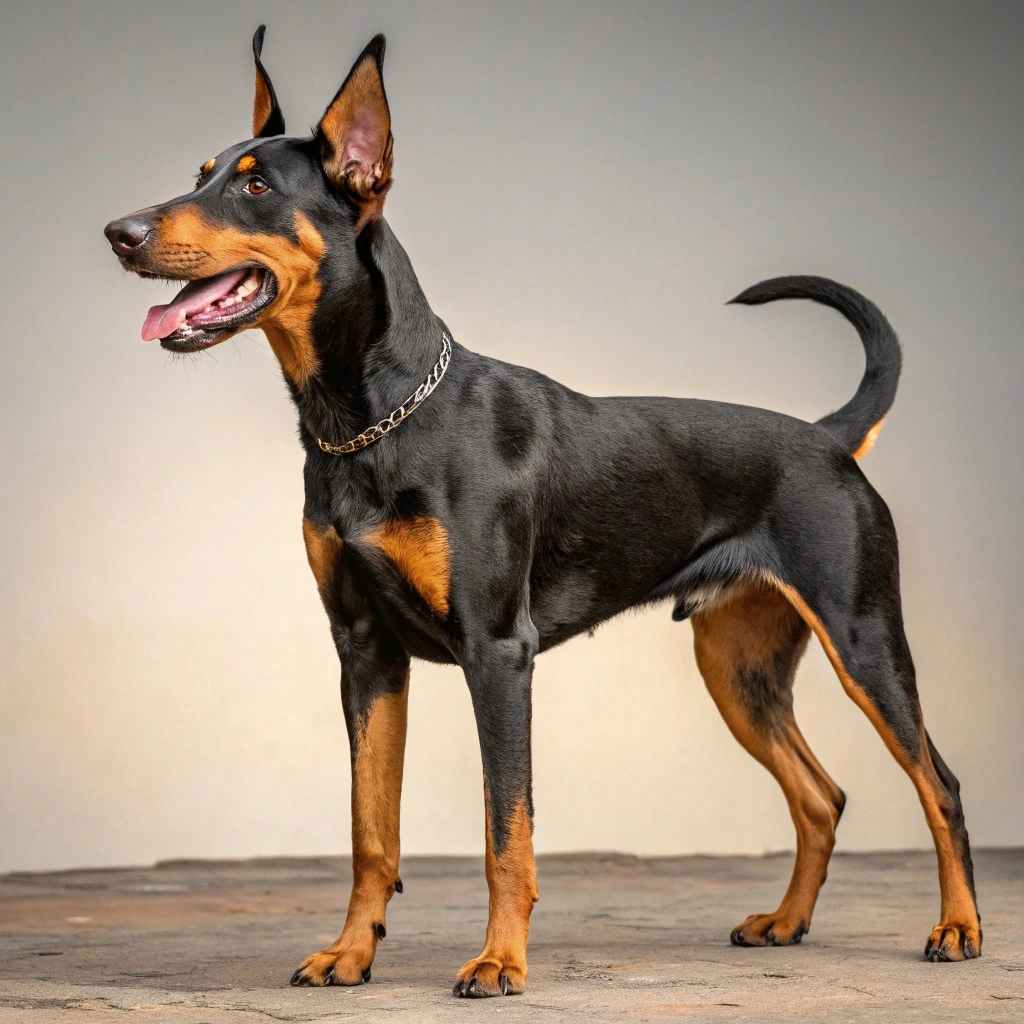
What is a Doberman Lab Mixes?
A Doberman Pinscher and a Labrador Retriever are crossed to create the designer dog breed known as a Doberman Lab Mix. This hybrid dog, sometimes referred to as a Doberdor or Labranian, is a popular option for families looking for a well-rounded companion because it possesses traits from both parents.
This mix brings together the Doberman’s natural protective instincts and intelligence with the Lab’s friendly, social, and energetic qualities. Both breeds are beloved worldwide for their loyalty and versatility, so it’s no surprise that their mix appeals to many dog lovers.
Why Mix Dobermans with Labradors?
- to strike a balance between the Lab’s gentle disposition and the Doberman’s fierce protective nature.
- to produce a highly intelligent and trainable dog.
- To get a loyal family pet that is both energetic and protective.
Physical Characteristics of the Doberman Lab Mixes
When it comes to looks, you can expect this mix to inherit physical traits from either parent or both. Typically, Doberman Lab Mix dogs have:
- Size: Medium to large-sized dogs, usually weighing between 55 to 85 pounds (25 to 39 kg).
- Height: Between 22 to 28 inches (56 to 71 cm) at the shoulder.
- Coat: Short to medium length, often smooth and dense. Coat colors may vary, commonly black, brown, or a mix with tan markings.
- Appearance: Muscular and athletic build with an alert expression and floppy or semi-erect ears.
Here’s a quick overview of size and weight by age for a Doberman Lab Mix:
| Age (Months) | Average Weight (lbs) | Average Height (inches) |
|---|---|---|
| 3 | 15 – 25 | 10 – 15 |
| 6 | 30 – 45 | 16 – 22 |
| 12 | 55 – 85 | 22 – 28 |
| Adult (18+) | 65 – 85 | 24 – 28 |
Lifespan: Typically, Doberman Lab Mix dogs live between 10 to 13 years, depending on genetics, health, and care.
Temperament and Personality Traits of the Doberman Lab Mixes
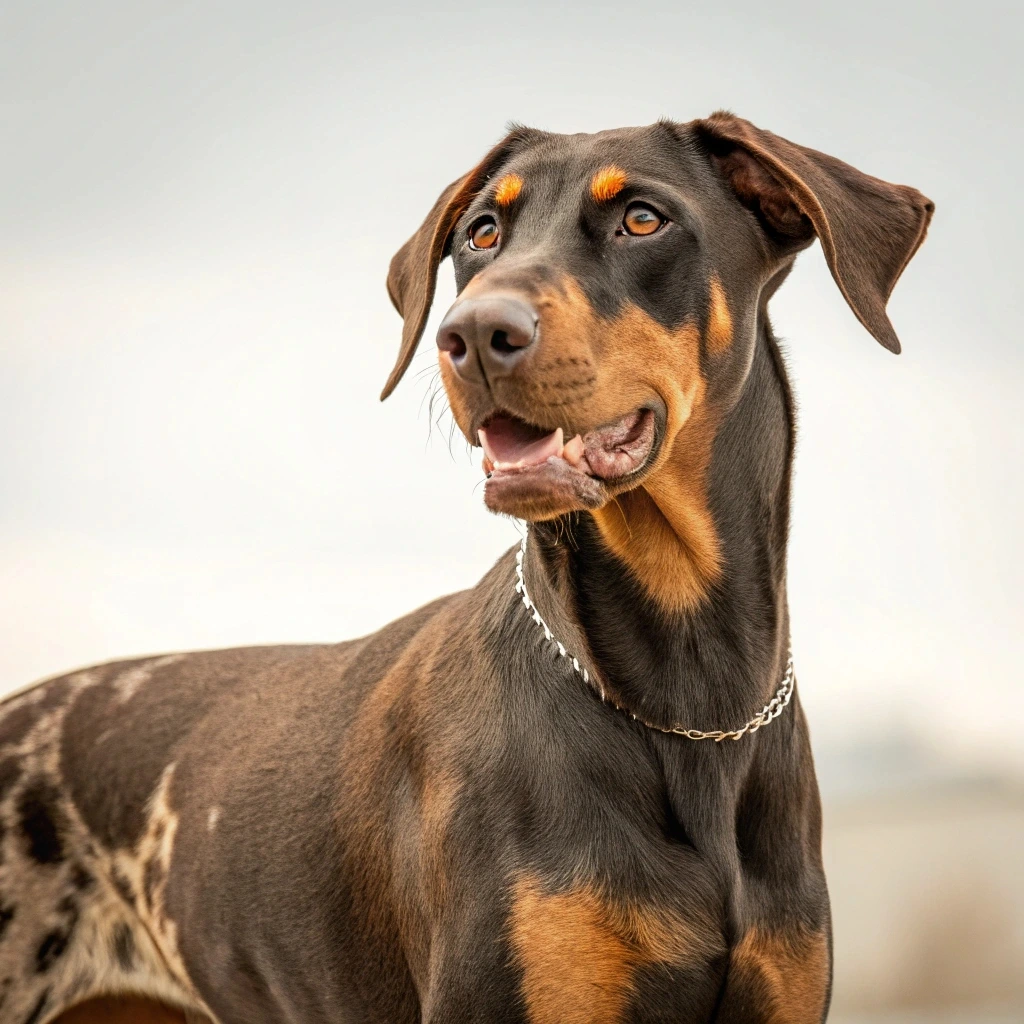
What Personality Traits Should You Expect?
If you’ve met both Dobermans and Labs, you know their personalities are quite different, but complementary. When combined, here’s what you can usually expect from your Doberman Lab Mix:
- Loyal and Protective: The Doberman’s guarding instincts often pass on, making this mix a vigilant protector of your home and family.
- Friendly and Social: Thanks to the Labrador side, your dog will be approachable, especially with family members and children.
- Energetic and Playful: Both parent breeds have high energy, so expect a dog that loves to play, run, and explore.
- Intelligent and Trainable: This mix is quick to learn commands and tricks, but consistency in training is key.
- Affectionate: Your Doberman Lab Mix will likely crave affection and enjoy spending time with you.
Is This Mix Right for Your Household?
This dog suits people who:
- Are active and can dedicate time to regular exercise.
- Have experience or willingness to train a dog that needs structure.
- Want a family dog that is good with kids but also a reliable watchdog.
- Can provide a safe space like a yard or access to parks for daily play.
If you live in a small apartment and have a sedentary lifestyle, this might not be the ideal dog for you, as it thrives with activity and mental stimulation.
Health, Care, and Maintenance of the Doberman Lab Mixes
Common Health Concerns to Watch Out For
Like all mixed breeds, your Doberman Lab Mix can inherit health issues from either parent. Awareness and preventive care are your best tools to keep your dog healthy.
Potential Health Issues:
- Hip Dysplasia: A common joint problem in both Dobermans and Labs that can cause pain or mobility issues.
- Heart Conditions: Dobermans are prone to cardiomyopathy, so regular vet check-ups are essential.
- Eye Problems: Cataracts or progressive retinal atrophy can occur, so eye exams help early detection.
- Obesity: Labradors are prone to gaining weight if they don’t receive enough exercise.
Regular vet visits, a balanced diet, and proper exercise are crucial to reducing risks.
Grooming and Coat Care
Generally speaking, the coat of a Doberman Lab Mix is short to medium and manageable. What you should know is as follows:
- Moderate to heavy shedding is common, particularly when the seasons change. Expect to brush your dog once a week, and more frequently during periods of shedding.
- Bathing: Unless your dog gets dirty, bathe as needed, usually once every six to eight weeks. To keep your dog’s skin and coat healthy, use a shampoo that is safe for dogs.
- Ear Care: To avoid infections, especially if your ears are floppy, check and clean them frequently.
- Trim your nails as needed or every three to four weeks.
Nutrition and Diet Recommendations for Your Doberman Lab Mixes
Feeding your Doberman Lab Mix properly is key to its overall health and energy. Because this mix is active and muscular, they require a balanced diet rich in protein and essential nutrients.
Nutrition Tips:
- Feed a high-quality commercial dog food formulated for medium to large breeds. Look for options with real meat as the first ingredient.
- Provide a balanced ratio of protein, fats, and carbohydrates to support energy and muscle maintenance.
- Steer clear of overfeeding to avoid obesity. Keep an eye on portion sizes based on the age and activity level of your dog.
- Fresh water should always be available.
Here’s a simple nutrition guideline based on size and activity:
| Weight Range (lbs) | Daily Calories | Protein % | Fat % |
|---|---|---|---|
| 55 – 70 | 1200 – 1400 | 25 – 30% | 10 – 15% |
| 70 – 85 | 1400 – 1600 | 25 – 30% | 10 – 15% |
Consider consulting your vet to tailor a diet specific to your dog’s needs, especially if your Doberman Lab Mix is very active or has health concerns.
Exercise and Training Requirements for a Doberman Lab Mixes
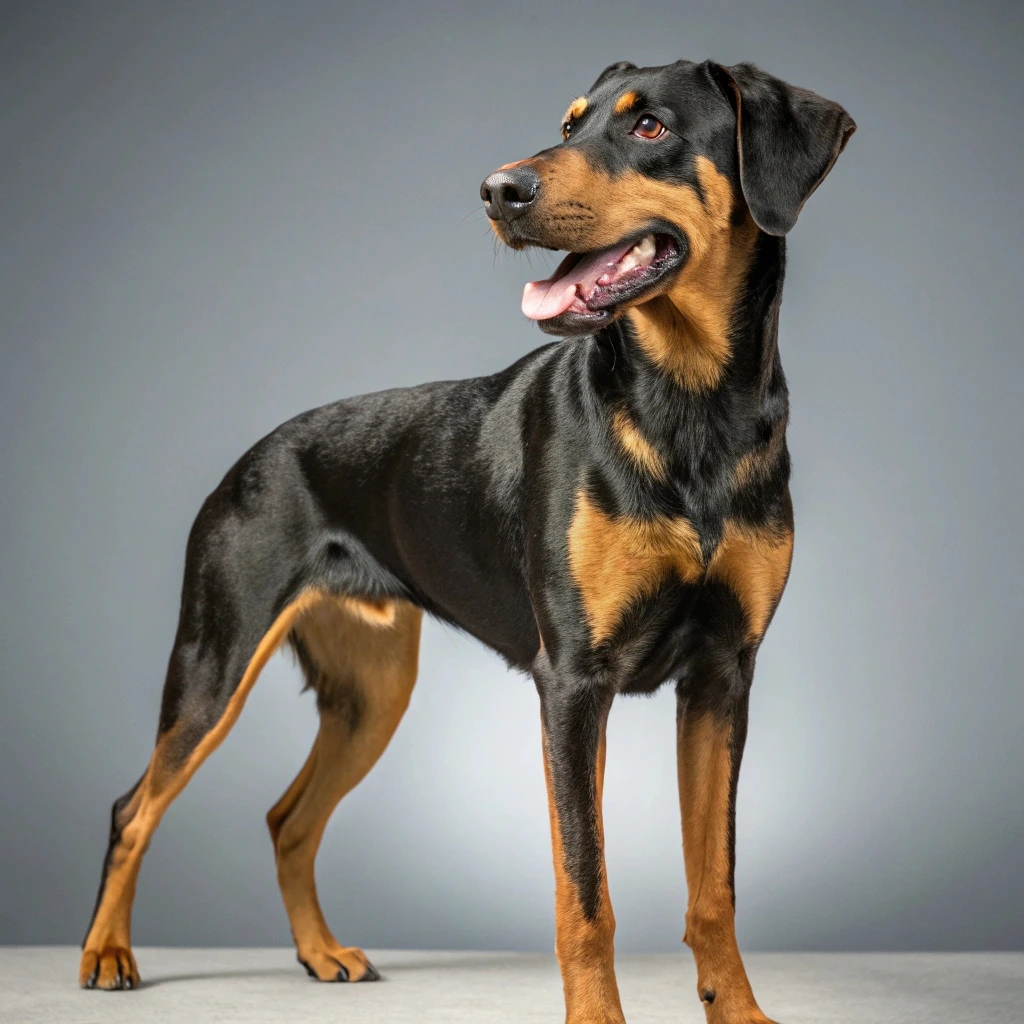
How to Train Your Doberman Lab Mix Effectively
You’ll find this hybrid smart and eager to please, but early training is critical to shaping good behavior.
Training Tips:
- Start socialization early to get your dog comfortable around people, pets, and new environments.
- Use positive reinforcement methods: treats, praise, and play. Avoid harsh punishment.
- Keep training sessions short but consistent—5 to 10 minutes multiple times daily works best.
- Teach basic obedience commands (sit, stay, come, heel) first, then advance to more complex tasks or tricks.
Meeting the Exercise Requirements
Your Doberman Lab Mix needs daily physical and mental activity to stay happy and healthy.
- Daily Exercise: Try to get in between 60 and 90 minutes of moderate-to-intense exercise each day. This can involve playing fetch, running, or walking.
- Mental Stimulation: Puzzle toys, obedience training, and agility courses will keep your dog’s mind sharp.
- Playtime: Interactive games strengthen your bond and tire your dog out in a fun way.
Remember, a bored Doberman Lab Mix can become destructive or anxious, so regular exercise is a must.
Doberman Lab Mixes Puppy Care and Growth Stages

What to Expect as Your Puppy Grows
Bringing home a Doberman Lab Mix puppy is exciting but requires preparation and knowledge about its growth stages.
Growth Milestones:
- 0-8 weeks: Puppies are nursing and socializing with their littermates. This is a critical window for initial socialization.
- 8-16 weeks: Your puppy is learning social skills and basic commands. Begin gentle training and introduce new experiences.
- 4-6 months: Rapid physical growth; watch for teething and start adjusting diet accordingly.
- 6-12 months: Puppy reaches near adult size; energy levels are high; consistent training remains essential.
Puppy Feeding Schedule and Nutrition
Puppies have different nutritional needs than adult dogs. Feeding frequency and portions vary as they grow:
| Age (Months) | Meals per Day | Portion Size (based on weight) | Notes |
|---|---|---|---|
| 2-4 | 4 | Small, frequent meals | High protein for growth |
| 4-6 | 3 | Moderate | Begin switching to adult food around 6 months |
| 6-12 | 2 | Larger portions | Adjust for activity level |
Frequently Asked Questions (FAQ) About Doberman Lab Mixes
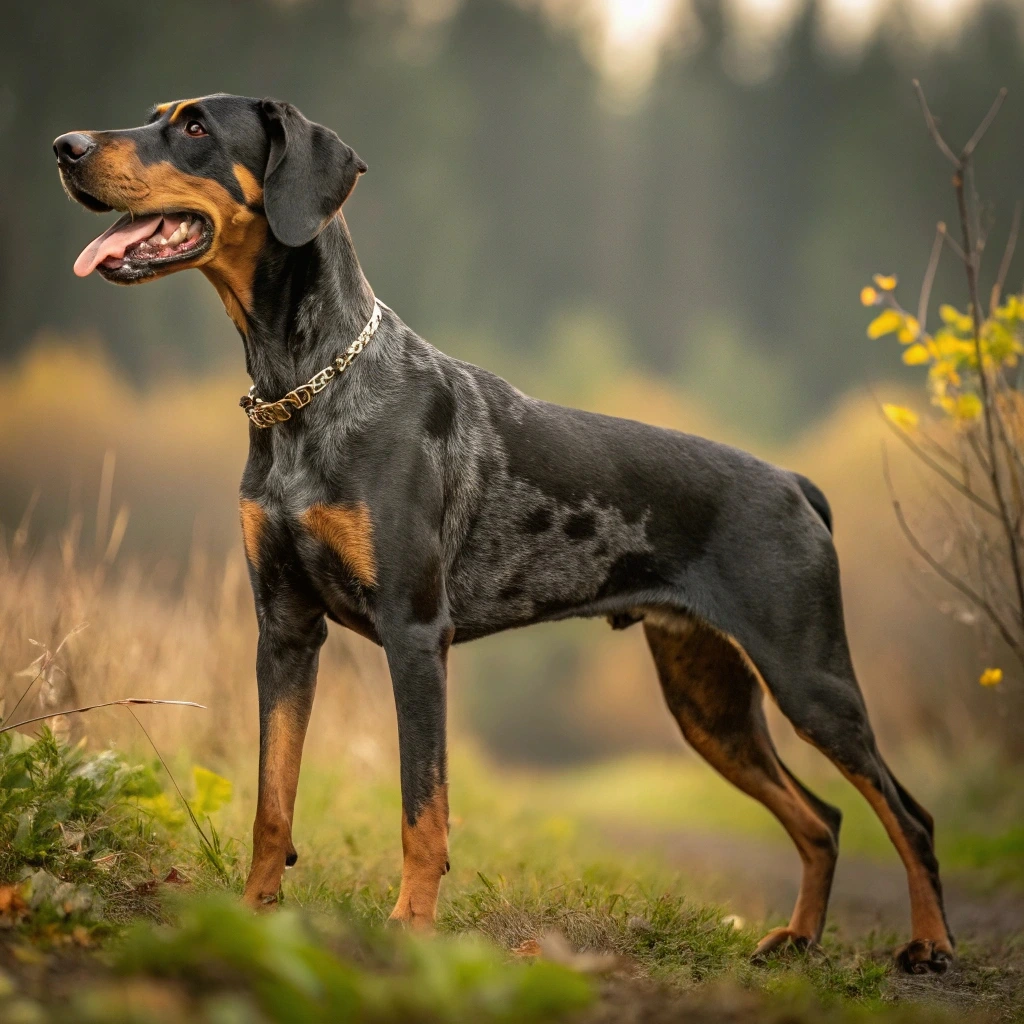
What is the typical growth size of a Doberman Lab Mixes?
Most Doberman Lab Mix dogs grow between 22 to 28 inches tall and weigh from 55 to 85 pounds. Size can vary depending on parent genetics.
Are Doberman Lab Mixes dogs good with children?
Yes! Thanks to the Labrador’s gentle nature, this mix is usually great with kids but always supervise interactions and train your dog properly.
How much exercise does a Doberman Lab Mixes need daily?
They typically require 60 to 90 minutes of exercise daily, including walks, playtime, and mental stimulation activities.
Do Doberman Lab Mixes shed a lot?
They shed moderately, with increased shedding during seasonal changes. Regular grooming helps manage loose fur.
What are the common health problems in Doberman Lab Mixes?
Hip dysplasia, heart conditions, and obesity are the most common health issues to watch for. Regular vet visits help early detection.
How trainable is a Doberman Lab Mixes?
Very trainable! They respond well to positive reinforcement and consistent training, making them suitable for both beginners and experienced dog owners.
Conclusion: Is the Doberman Lab Mixes the Right Dog for You?
Choosing a dog is a big decision that affects your daily life and happiness. If you want a loyal, energetic, and intelligent companion who can protect your home and shower your family with love, the Doberman Lab Mix might be a perfect match. Remember, this hybrid thrives on regular exercise, proper training, and your time and affection.
